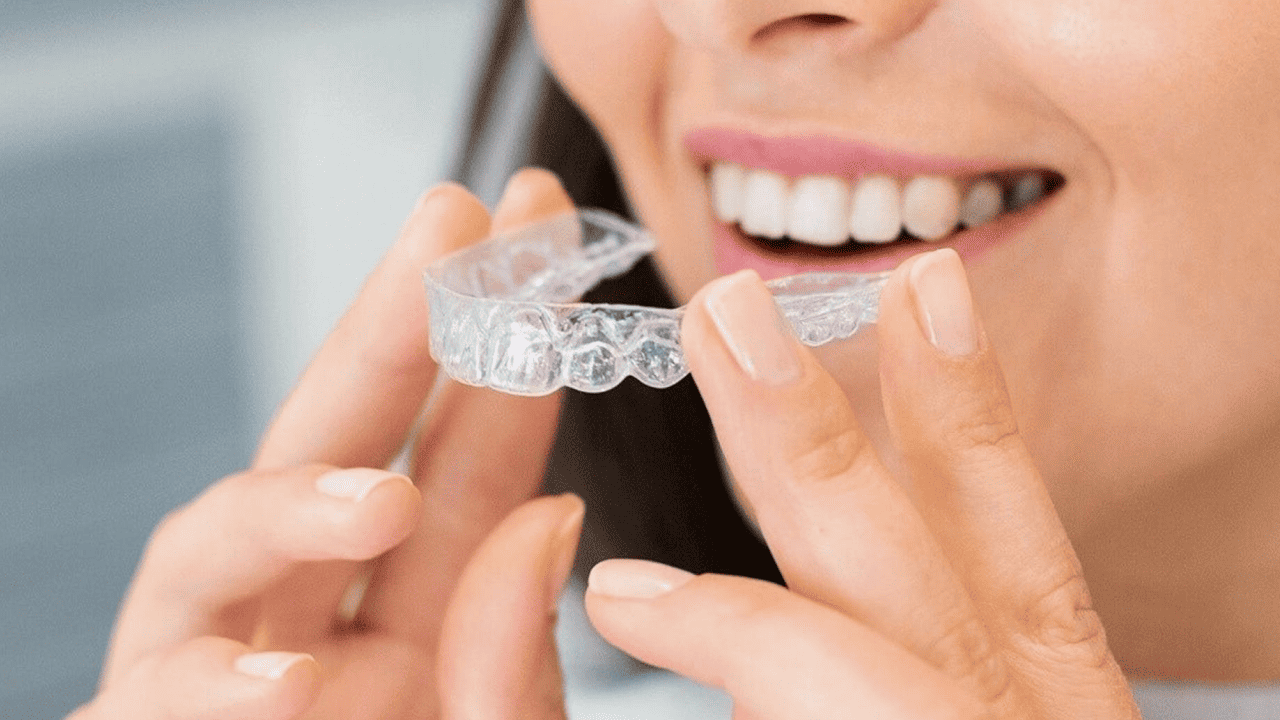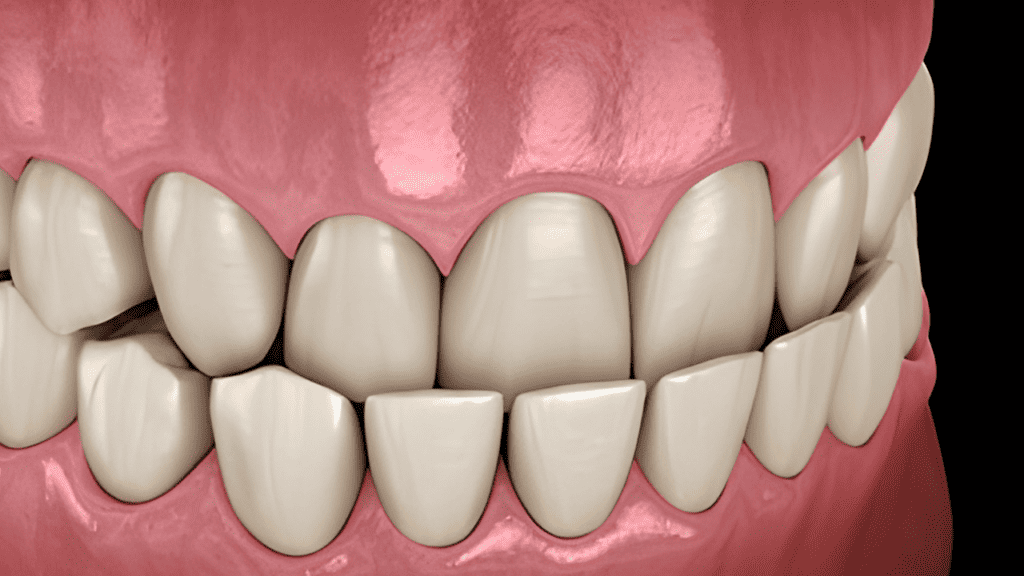Teeth straightening is a transformative dental procedure that can significantly enhance both the appearance of your smile and your overall oral health. Crooked or misaligned teeth not only impact your self-confidence but can also lead to various dental problems. Whether you’re considering teeth straightening for cosmetic reasons or to improve your dental health, this comprehensive guide will provide you with valuable insights into the benefits, different treatment options, costs, insurance coverage, recovery, and more. So, let’s embark on a journey to explore the fascinating world of teeth straightening and discover how you can achieve a perfect, confident smile.
Should You Get Your Teeth Straightened?
The decision to get your teeth straightened is a personal one. While some individuals are content with their natural smile, others may feel self-conscious or experience oral health issues due to misaligned teeth. If you find yourself avoiding smiling or experiencing difficulty in properly cleaning your teeth, teeth straightening could be the right choice for you. A beautiful smile can boost your self-confidence, improve your overall quality of life, and positively impact how others perceive you.
Benefits of Straightening Your Teeth
Straightening your teeth goes beyond just aesthetic improvements. It offers several significant benefits for your oral health and overall well-being:
Enhanced Dental Hygiene
Straight teeth are easier to clean, making it simpler to maintain proper oral hygiene practices such as brushing and flossing. When teeth are properly aligned, there are fewer hard-to-reach areas where plaque can accumulate, reducing the risk of cavities, gum disease, and bad breath.
Improved Chewing and Digestion
Properly aligned teeth enable efficient chewing, which aids digestion and nutrient absorption. When teeth are misaligned, it can lead to difficulty in breaking down food, potentially causing digestive problems and malnutrition.
Reduced Risk of Dental Injuries
Crooked teeth are more prone to chips, cracks, and other dental injuries. By straightening your teeth, you minimize the risk of accidental damage to your teeth, protecting your oral health in the long run and avoiding potential costly dental treatments.
Alleviation of Jaw and Bite Issues
Misaligned teeth can cause problems with your bite, leading to issues such as temporomandibular joint disorder (TMJ). Teeth straightening can help correct these bite abnormalities, relieving jaw pain, headaches, and discomfort.
Enhanced Speech and Articulation
Teeth play a crucial role in speech. Misaligned teeth can affect your ability to pronounce certain sounds correctly. Straightening your teeth can improve speech clarity and articulation, leading to better communication and increased self-confidence in social and professional settings.
Boosted Self-Confidence
A beautiful smile can significantly impact your self-esteem and confidence levels. When you feel good about your teeth and smile, you’re more likely to express yourself freely, engage in social interactions, and showcase your unique personality without hesitation.
Types of Tooth Misalignment & Causes
Teeth misalignment can occur in various ways, and understanding the different types can help determine the most suitable treatment for you. The common types of tooth misalignment include:
Crowding
Crowding occurs when there isn’t enough space in your jaw for all your teeth, causing them to overlap or twist. This often results in crooked or rotated teeth. Crowding can be caused by genetic factors, late loss of baby teeth, or early eruption of permanent teeth.
Spacing
On the opposite end of the spectrum, spacing occurs when there are gaps between your teeth. This can be due to missing teeth, small teeth, an excessive jaw size, or improper eruption patterns.
Overbite
An overbite occurs when the upper front teeth overlap significantly with the lower front teeth. This misalignment can be caused by genetics, thumb-sucking, prolonged pacifier use, or improper oral habits during childhood.
Underbite
In an underbite, the lower front teeth protrude beyond the upper front teeth. This misalignment can be caused by a disproportionate jaw size, skeletal discrepancies, or genetics.
Crossbite
A crossbite happens when some upper teeth sit inside the lower teeth when biting down. This can lead to asymmetrical jaw growth, functional issues, and potential damage to teeth and supporting structures.
The causes of tooth misalignment can vary, including genetic factors, habits like thumb-sucking or tongue thrusting, early loss of primary teeth, oral injuries, or improper dental care during childhood. Understanding the underlying cause helps in determining the appropriate treatment for your specific condition.
The 9 Most Effective Ways to Straighten Your Teeth
When it comes to straightening your teeth, you have several treatment options available. Here are the nine most effective methods:
Traditional Braces
Traditional metal braces consist of brackets and wires that gradually shift your teeth into alignment. They are highly effective for various types of tooth misalignment and offer precise control over tooth movement.
Clear Aligners
Clear aligners, such as Invisalign, are transparent, removable trays that gradually straighten your teeth over time. They offer a discreet and convenient alternative to traditional braces, allowing you to maintain your normal oral hygiene routine and enjoy unrestricted eating.
Lingual Braces
Lingual braces are similar to traditional braces but are placed on the backside of your teeth, making them virtually invisible from the front. They provide effective tooth alignment while remaining inconspicuous.
Ceramic Braces
Ceramic braces use tooth-colored or clear brackets and wires, providing a less noticeable option compared to traditional metal braces. They are popular among individuals who desire a more aesthetic treatment approach.
Retainers
Retainers are often used after completing braces or aligner treatment to maintain the corrected position of your teeth. They can be removable or fixed, depending on your specific needs.
Dental Veneers
While not a traditional teeth straightening method, dental veneers can help improve the appearance of mildly misaligned teeth by placing thin shells on the front surface of the teeth. Veneers can also address other cosmetic concerns such as discoloration, chips, or cracks.
Dental Crowns
For more severe misalignment or tooth damage, dental crowns can be used to reshape and align teeth, providing both functional and aesthetic benefits. Crowns are typically recommended for individual teeth rather than comprehensive orthodontic treatment.
Tooth Recontouring
Tooth recontouring involves shaping and resizing teeth to create a more harmonious alignment. This technique is suitable for minor adjustments and may be combined with other cosmetic dental procedures.
Orthodontic Surgery
In complex cases involving severe misalignment or skeletal discrepancies, orthodontic surgery may be required to correct jaw misalignment and achieve optimal tooth alignment. Surgical orthodontics is typically considered a last resort when other treatment options are insufficient. Orthodontic surgery is also known as orthognathic surgery. This involves collaborative work with an orthodontist and oral and maxillofacial surgeon. The orthodontist aligns the dentition and OMFS focus on jaw correction.
Each of these methods has its unique advantages, considerations, and suitability for different types of misalignments. It’s important to consult with an experienced orthodontist who can assess your specific needs and recommend the most effective treatment plan for you.
How Much Does It Cost to Straighten Your Teeth?
The cost of teeth straightening varies depending on several factors, including the severity of your misalignment, the chosen treatment method, the duration of treatment, and your geographical location.
On average, traditional braces can range from $3,000 to $7,000, while clear aligners like Invisalign may cost between $3,000 and $8,000. However, it’s important to note that these are just average figures, and the actual cost can vary significantly based on individual circumstances. Complex cases or the need for additional procedures, such as tooth extractions or orthognathic surgery, can increase the overall cost.
When considering the cost of teeth straightening, it’s essential to take into account the long-term benefits and potential savings. Straightening your teeth can improve your oral health, potentially reducing the need for costly dental treatments in the future. Additionally, many orthodontic practices offer flexible payment plans or financing options to help make the treatment more affordable.
It’s recommended to schedule a consultation with an orthodontist to discuss your specific case, receive a comprehensive treatment plan, and obtain an accurate cost estimate tailored to your needs.
Does Insurance Cover Teeth Straightening?
Insurance coverage for teeth straightening varies among different dental insurance providers and plans. In general, dental insurance may provide partial coverage for orthodontic treatment, particularly for individuals under the age of 18. However, it’s crucial to review the specifics of your insurance policy to determine the extent of coverage and any potential limitations or exclusions.
Orthodontic treatment is often categorized as a separate benefit within dental insurance plans, and coverage may be subject to certain conditions. These conditions may include age restrictions, pre-authorization requirements, waiting periods, and limitations on the types of treatment covered. Some dental insurance plans may cover a percentage of the treatment cost, while others may provide a fixed dollar amount or a lifetime maximum benefit.
To fully understand your insurance coverage, it’s recommended to contact your dental insurance provider directly or consult with your orthodontist’s office. They can help verify your benefits, provide information on coverage limits, and guide you through the insurance claim process.
What Is the Cheapest Way to Straighten My Teeth?
If budget is a primary concern, traditional metal braces tend to be the most cost-effective option for teeth straightening. Metal braces have been used for decades and have a proven track record of success in correcting various types of tooth misalignment. They offer precise control over tooth movement and are typically less expensive compared to alternative options.
While metal braces may not offer the same level of aesthetics as clear aligners or other discreet options, they remain highly effective in achieving optimal tooth alignment. The cost of traditional braces can vary depending on factors such as the complexity of your case, the duration of treatment, and your location.
To make the cost more manageable, discuss your financial limitations with your orthodontist. Many orthodontic practices offer flexible payment plans that allow you to spread the cost of treatment over an extended period. Some offices also provide in-house financing or accept third-party financing options, which can help you cover the expense in more affordable monthly installments.
Is Teeth Straightening Surgery Painful?
The level of discomfort experienced during teeth straightening depends on the chosen treatment method. It’s important to note that any discomfort is typically temporary and manageable with appropriate care and pain management techniques. Here’s a general overview of the potential pain or discomfort associated with different teeth straightening methods:
Traditional Braces
After the initial placement of braces, you may experience some soreness and discomfort as your teeth begin to adjust. This discomfort is typically mild and can be managed with over-the-counter pain relievers. Additionally, you may experience some temporary discomfort during routine adjustments or after wire changes. Acetaminophen is the best choice for pain relief because long term use of NSAIDs can slow tooth movement.
Clear Aligners
Clear aligners, such as Invisalign, generally cause less discomfort compared to traditional braces. However, you may experience some initial soreness or pressure as your teeth adjust to each new aligner tray. This discomfort is usually mild and subsides within a few days.
Orthodontic Surgery
Orthodontic surgery, such as orthognathic surgery, is typically performed in more complex cases involving severe misalignment or skeletal discrepancies. While the surgery itself is performed under anesthesia, there may be some discomfort during the recovery period. Your dental surgeon will provide you with appropriate pain management techniques to ensure your comfort during the healing process.
It’s important to communicate any pain or discomfort to your orthodontist or dental surgeon throughout the treatment process. They can provide guidance, recommend pain relief options, and make adjustments to ensure your overall comfort.
What Is the Least Painful Way to Straighten Your Teeth?
Clear aligners, such as Invisalign, are often considered the least painful option for teeth straightening. These custom-made trays exert gradual and controlled pressure on your teeth, reducing the likelihood of discomfort compared to traditional braces. Additionally, the smooth plastic material of clear aligners minimizes irritation to the soft tissues of your mouth, making them a comfortable choice for many individuals.
While some initial soreness or pressure may be experienced during the first few days of wearing a new aligner tray, it generally subsides quickly as your teeth adjust. Clear aligners also have the advantage of being removable, allowing you to eat, brush, and floss with ease, further enhancing your overall comfort throughout the treatment process.
How Long Do Teeth Straightening Treatments Take?
The duration of teeth straightening treatments varies depending on the complexity of your case, the chosen treatment method, and your individual response to treatment. While each case is unique, here’s a general overview of the treatment duration for common teeth straightening options:
Traditional Braces
Treatment with traditional braces typically lasts between 18 to 36 months. The exact duration depends on the severity of your misalignment, your age, and how well you comply with your orthodontist’s instructions.
Clear Aligners
The treatment duration with clear aligners can range from several months to around two years. The length of treatment depends on the complexity of your case and the number of aligner trays required to achieve the desired results. Patient compliance is imperative. Aligners must be worn 22 hours a day.
Orthodontic Surgery
Orthodontic surgery is typically performed in more complex cases and may involve a combination of pre-surgical orthodontic treatment and post-surgical refinement. The overall treatment timeline for orthodontic surgery can extend from 12 to 24 months or longer, depending on the specific case.
These are general timelines, and individual treatment durations may vary. Your orthodontist will provide a more accurate estimate based on a thorough evaluation of your specific needs.
How Long Does It Take to Recover from Teeth Straightening Surgery?
Recovery time from teeth straightening surgery depends on the extent of the procedure and your body’s healing process. Following orthodontic surgery, you may experience swelling, discomfort, and mild pain for a few days to a couple of weeks. Your dental surgeon will provide specific post-operative instructions, including pain management techniques, dietary restrictions, and oral care guidelines to facilitate a smooth recovery.
The initial days after surgery may involve a soft or liquid diet to ensure minimal strain on your jaw and allow proper healing. As the days progress, you’ll gradually transition to a more regular diet. It’s essential to follow your dental surgeon’s instructions diligently and attend all scheduled follow-up appointments to monitor your progress and address any concerns.
The complete recovery from orthodontic surgery may take several weeks to months, depending on the complexity of the procedure. During this time, you should notice improvements in your jaw alignment and experience a more comfortable bite.
How Can I Straighten Teeth Without Braces?
If you prefer to avoid braces, there are alternative methods available for teeth straightening. These methods may be suitable for individuals with mild to moderate tooth misalignments. Here are a few options for straightening teeth without braces:
Clear Aligners
Clear aligners, such as Invisalign, are a popular alternative to traditional braces. They are custom-made, transparent trays that gradually shift your teeth into alignment. Clear aligners offer a discreet and convenient option as they are nearly invisible when worn. They are also removable, allowing you to eat, brush, and floss with ease.
Dental Veneers
Dental veneers are thin shells made of porcelain or composite resin that are bonded to the front surface of your teeth. While veneers are primarily used for cosmetic purposes, they can also address minor misalignments, gaps, or uneven teeth. Veneers can create the appearance of straighter teeth, providing a quick and relatively non-invasive solution.
Dental Bonding
Dental bonding involves the application of a tooth-colored resin material to the teeth. It can be used to correct minor misalignments or reshape teeth to achieve a more balanced appearance. Bonding is a cost-effective and minimally invasive option for improving the alignment and aesthetics of your teeth.
Retainers
In some cases of mild tooth misalignment, retainers can be used to achieve minor corrections. Retainers are custom-made appliances that help maintain the position of your teeth after completing orthodontic treatment. In certain situations, they can be designed to apply gentle pressure to shift the teeth slightly over time.
Tooth Contouring
Tooth contouring, also known as enameloplasty or enamel shaping, involves removing small amounts of tooth enamel to reshape and recontour the teeth. This technique is suitable for minor adjustments, such as correcting uneven edges or slight overlaps. It is a conservative and painless procedure that can enhance the appearance of your smile.
Keep In mind that these alternative methods may not be suitable for everyone. The effectiveness of these treatments depends on the specific alignment issues and the severity of the misalignment. Consulting with an experienced orthodontist or cosmetic dentist is crucial to determine the most appropriate treatment option for your specific case.
Does Straightening Your Teeth Change Your Smile?
Yes, straightening your teeth can have a transformative effect on your smile. By correcting misalignments, your teeth become more aesthetically pleasing and symmetrical. Straight teeth create a harmonious and balanced smile that can significantly enhance your facial appearance and overall attractiveness.
In addition to the physical changes, straightening your teeth can have a positive impact on your self-confidence. When you feel confident about your smile, you are more likely to express yourself freely and engage in social interactions without reservation. Straight teeth can boost your self-esteem and contribute to an improved quality of life.
Can You Straighten Just a Few Teeth?
Yes, it is possible to straighten only a few teeth. In some cases, individuals may have one or a few teeth that are misaligned, rotated, or out of position while the rest of their teeth are relatively straight. Depending on the severity of the misalignment and the desired outcome, various treatment options can be considered to straighten specific teeth:
Clear Aligners
Clear aligners can be an effective option for straightening individual teeth. The aligners can be customized to target specific tooth movements, allowing for precise adjustments. This approach is particularly suitable for mild to moderate misalignments.
Dental Veneers
Dental veneers can be used to improve the appearance of individual misaligned teeth. By placing veneers on specific teeth, a more uniform and aligned look can be achieved. Veneers are ideal for addressing cosmetic concerns, such as slightly crooked or rotated teeth.
Orthodontic Treatment
In some cases, orthodontic treatment with braces or aligners may be recommended to straighten a few teeth. By targeting the misaligned teeth specifically, orthodontic appliances can gradually shift them into the desired position, creating a more harmonious smile.
However, avoid DIY orthodontic treatment trends out there. Using gap bands, rubber bands, paperclips, beads, dental floss, and elastic bands to try and move your teeth is just asking for trouble. Orthodontic movement needs to be done precisely, and if it’s not, you can permanently damage your teeth, gums, and roots. In some cases, it can even lead to bone loss and tooth loss.
It’s important to consult with an orthodontist or cosmetic dentist to determine the best course of action for straightening specific teeth. They will assess your dental condition, discuss your goals, and recommend the most appropriate treatment option based on your individual needs.
Conclusion
Teeth straightening is a transformative dental procedure that offers numerous benefits for your oral health, appearance, and self-confidence. Whether you choose traditional braces, clear aligners, or alternative methods, achieving a straight and beautiful smile is within reach.
Through teeth straightening, you can enhance your dental hygiene, improve chewing and digestion, reduce the risk of dental injuries, alleviate jaw and bite issues, and boost your self-esteem. With a variety of treatment options available, there is a solution to suit different needs, preferences, and budgets.
Related Articles
Lingual Braces: Pros + Cons and How They Work
Power Chains Braces: The Complete Guide
Headgear Braces: Everything You Need To Know
Fatima Khan is a healthcare professional. She has contributed to the healthcare industry as a nurse, nutritionist, adjunct professor, and Dentist. She holds a Master's degree in Biomedical Science and Doctorate in Dental Medicine and is currently practicing Dentistry in Houston, TX. She is the co-founder of Riven oral care, a probiotic-based mouthwash that helps you strengthen your oral microbiome.
Marcus Ramsey has been a professional writer for over seven years. He has talked about and produced content for industries like Dentistry, Healthcare, and more.






